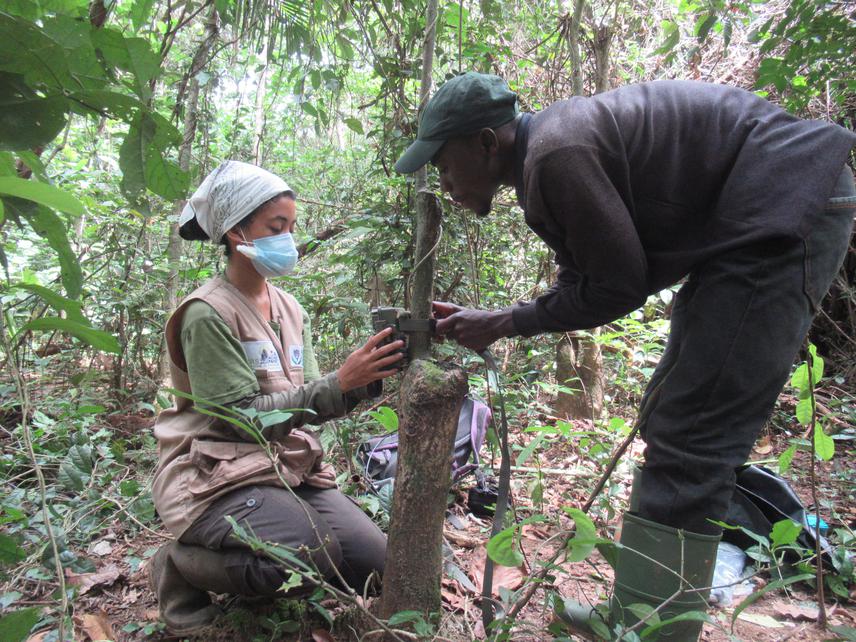Zausa Diorne Marie-Aurore Koko
The project focuses on mammals present in residual forests in the Sud-Comoé region of south-eastern Côte d'Ivoire. The region is a biodiversity hotspot where few research or conservation projects were implemented despite the potential presence several species of conservation concern. Our project considers four study sites, including two that are wetland sites of international importance according to the Ramsar Convention.
The main objective of this project is to update the distribution and conservation status of medium and large mammal species still present in the selected residual forests. The specific objectives are: (i) to establish a list of mammal species for each site with their conservation status and (ii) to identify the main micro-habitats used as refuges by mammals. The results obtained will serve to highlight ecological value of these areas and to develop a rational conservation strategy of biodiversity in the region.

The project will focus on four forest areas in the Sud-Comoé region of south-eastern Côte d'Ivoire: (i) the Ehotilé Islands National Park; (ii) the classified forests of N'ganda N'ganda; (iii) Comoé 1 and (iv) Soumié.
We will use camera traps that have proven his efficiency for mammals’ inventory in rainforest and are particularly useful for rare, discrete, and nocturnal animal species that are difficult to observe. Camera traps will be installed in the different study areas considering all types of environments (e.g. dense forest, wet savannah, and swamp forest). This will cover the entire study area over several months with different weather conditions. Agents in charge of the protection of these areas will be train to use camera trap.
This project will generate a set of data that will be available for sites managers and future scientific studies that will be done in the area. These will be the first results using camera traps for the majority of selected sites. The best pictures will be selected to implement a photographic database of mammals of Côte d’Ivoire. One of the main results will be the quasi-exhaustive inventory of mammals in the area with the support of images confirming their presence. The location of camera traps according to a grid in the different zones will permit to obtain the distribution of the mammals and to identify their ecological preferences. Cartographic representations (GIS) will be created with mammal distribution data to facilitate the reading of results and to have a better visual impact with local and national managers and decision-makers in the region. If this study is successful, it would be replicated in other residual forests where mammal’s data is lacking. Regarding the mammal species identified and their conservation status, we will determine conservation issue of each forest block and make this data accessible to relevant institutions.